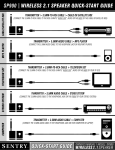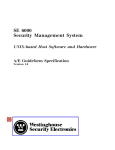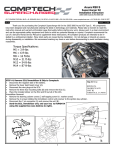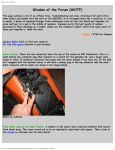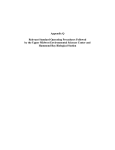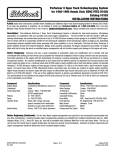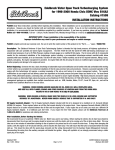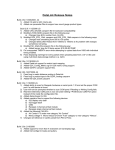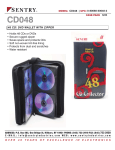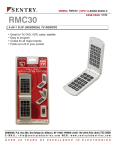Download Dyno Tuning Agreement and Waiver
Transcript
Xenocron Tuning Solutions Client Dyno Tuning Agreement Last Updated 8/21/13 Please make sure you read, initial and understand everything on these pages. If you have questions, please ask via phone or email before you come for your appointment, not after you arrive on the day of your tune. In order for you to get the maximum benefit out of us tuning your car, we need to work together to make that happen. I will expect (assume) that everything in this list is up to par unless prior arrangements are made and possible issues are discussed before you come in for your tune. Please fill out all blank spots with the information requested before arriving with your car and sign this form to signify that you have read it completely and you agree to all terms. If you need us to complete any of these required procedures before tuning, we can for a charge, and a separate date and appointment might be needed to do that for you so please ask and we can make it happen! Arrival Time and Tune Start: ______ initial All tuning appointments begin at 10am (unless otherwise arranged ahead of time). I expect that you arrive early or just on time so that you can get the full amount of allotted time in for tuning your car. The clock starts at 10am and flat rate tunes are scheduled to go for 4 hours. If your vehicle is in 100% working order, we shouldn’t need any more time for the full experience including setup, loading on the dyno, tuning, unloading, street check and final button up of the car. If you arrive late for any reason, this will cut into the allotted time for tuning. I don’t want to have to “rush” when tuning so please don’t put me in that situation. If the tune goes longer than the allotted time, it is $100/hr that your car is on dyno and in my shop after the 2pm cutoff. If you do not want to continue on after 2 pm, it is your responsibility to stop me and notify me that you are not willing to incur any other charges. We will of course discuss options at that point as I want to help you out to the best of my ability and my ultimate goal is that you leave happy. Payment: ______ initial Payment is due in full up front before beginning your tune. This total is less any deposit you have paid already and will need to be paid in cash please. For instance, if you paid a $100 deposit for the date and your flat rate tune price is $600, you will pay $500 in cash before the tune begins. Any parts, labor or other charges incurred during the session will be tallied at the end of the tune and can be paid for with cash, credit card or Paypal as needed. If you do not bring cash with you to your appointment, I will direct you to the nearest ATM, and ask you to go there first before beginning the tune. This will of course most likely cut into the allotted time for tuning and I really don’t want to have that happen so please plan ahead. All pricing is online and current. Running Vehicle: _______ initial Any vehicle which arrives for its tuning appointment in a NON-RUNNING state will be charged an automatic $100 surcharge. Vehicle must be able to start, run and drive onto the dyno in order to be considered ready for a Dyno Tune. If the battery is dead when you unload the car off of your trailer, this is the same circumstance and you will be charged the same fee unless you bring your own jumper pack, get it started and running and can drive it up to the dyno. A vehicle will not be loaded or strapped onto the dyno until it is in a properly running state. Any labor needed to fix a vehicle to get it to run will be charged independently of the tuning price if the customer is not able to perform the work themselves, with their own tools. 1 Please make sure the following required items are completed prior to your tune date, and fill in the information in the blank spots on this paper along with your intials. Parts List / Setup Details: ______ initial It is always in the customer’s best interest to have a thorough and detailed understanding of the all of the parts in any setup and the details of the build. As a tuner, a lot of my job requires guessing and assuming, and in order to eliminate as many assumptions and make as few guesses as I need to make, I can tune your car more effectively and safely and at the same time make the most power the setup can deliver. If you don’t know what brands were used in your build, or the specs on the parts used in your setup, this makes it harder to do my job since generally I am not the one who recommended which parts you should use or did the build myself. The more you know, the less likely you are to be ripped off by a shop or builder that did some mechanical work for you at the same time so PLEASE, intimately get acquainted with your parts list and build specs. For example, if you have a 700 HP drag car built, I expect you to know what your piston to wall clearance was set at by your machinist. Compression Test: In my opinion, you should know the health of your motor before having it tuned. I can be more thorough when I know that compression is good before beginning a tune. Performing a tune on an unhealthy motor is the quickest way to a disaster and a potential waste of other good parts that might be ruined in the process. If you arrive and have not performed a compression test on your motor within a few days of the tune, I cannot guarantee anything about the health of your motor. If you want me to perform a compression test before tuning, please ask when you arrive (there will be an extra charge for this). This will also give you a ‘baseline’ to monitor throughout the life of your engine. If you would like us to do a compression test before the start of the tune, please let me know. This service would be a $50 additional charge. Approximately ‘Healthy’ numbers – 8:1-8.5:1 compression: 150-170 psi per cylinder 8.5:1~9.5:1 compression: 170-210 psi per cylinder 9.5:1~11:1 compression: 210-275 psi per cylinder 11:1+ compression: 250+ per cylinder (highly depends on cams being used) The tested numbers shouldn’t vary any more than 10% from cylinder to cylinder or this may indicate a problem. Results: Cylinder #1 ______ Cylinder #2 ______ Cylinder #3 ______ Cylinder #4 ______ Valve Adjustment See the specs for your motor/cams from a Service Manual for what the valve lash should be set to on your motor. Set the valves on a fully cold engine only as metal expands when heated which could throw off your settings when performing a valve adjustment on a warm motor. Please write the settings you used when adjusting your valve lash. Valve lash is VERY important if you want to make POWER, please don’t overlook this as a non-essential piece of the build puzzle. Refer to a factory manual for actual factory specs or your cam manufacturer…and my recommendation is always to set lash on the LOOSER side of the spectrum. If you want us to set your lash, the motor must be fully COLD, and this will result in an additional charge of $150 depending on the setup. It may not be possible for us to do this on the same day as your tune. Intake Setting: ______ Exhaust Setting: ______ 2 Timing Belt and Base Timing ______ initial The timing belt/chain, camshafts and crank need to all be synched correctly before coming in for your scheduled tune. This is a fairly simple process on a stock motor and you can check your Service Manual for procedures on how to perform this. Various motor combinations (Frankenstein motors with VTEC Heads on Non-VTEC blocks) may affect exactly how you bring the motor into proper spec. Other things that may affect timing will be block and head surfacing, adjustable cam gears set incorrectly, timing belt set on the wrong teeth of the cam gear or incorrectly machined aftermarket cam gears, using the wrong parts for the combination put together and more. Please consult a professional before your tune if you aren’t 100% sure that your timing is set correctly. If mechanical timing is off, this will result in an additional charge for us to repair. Also check base timing with a timing light and make sure it is approximately in the 14-18 degree BTDC (before top dead center) region. Adjust the distributor if this setting is way out of spec to see if you are able to bring it within spec using only the distributor. If you can, chances are everything mechanically is set correctly…if you cannot, then chances are something is set incorrectly. I will set and synch base timing before beginning the tune using a timing light, but I want you to make sure it is close and that something else is not “off” before beginning the tune. If the timing belt is aligned incorrectly, this will increase the cost of the appointment if I need to fix it during the tune or end the day early for you if you don’t have additional funds in your budget to fix it correctly. A motor cannot be tuned properly with cam timing set incorrectly. Tires, Alignment and Suspension ______ initial The dyno we use is a small roller dyno, Mainline AWD Digital unit. Very sticky tires or slicks DO NOT work very well with our dyno. Normal everyday street tires (all season or summer) work best for traction, wear and straight running. Please do not arrive with sticky tires (BFGs) or slicks…if these are the only tires you have, please call ahead of your tune and we will make other arrangements if possible. A vehicle out of alignment will measure LOWER HP than one in correct alignment. If you are concerned with HP #s, please make sure you give yourself the best chance of achieving your goals. Your suspension should be set properly and all bolts, ball joints, tie rods and bushings should be in good shape. Cars are driven in excess of 130 mph sometimes on the dyno and a suspension failure at that speed in this environment could be extremely dangerous. If I look at your car when it comes in and notice a potential problem, I will turn the car away and your deposit will not be refunded. For ride height, please do not bring in completely slammed to the floor cars, a normal aggressive street drop of 1-2” is fine…any lower we may have issues with exhausts hitting, tires rubbing or other. When the car is strapped to our Mainline AWD Dyno, instead of holding the car in place on top of rollers like a Dynojet or Mustang dyno, the car is strapped over the lower control arms and is pulled DOWN into the dyno which lowers it even more while strapped down. Please do not ignore this. Please Initial Check Engine Lights Tire Check ______ Suspension Check ______ Ride Height Check ______ ______ initial The car should have ZERO Check Engine Lights. Please do not make an appointment or come until all check engine lights are cleared. If you need help with this, please call or email us well before your appointment and we will help guide you on this. If your car arrives with a check engine light, please expect to pay labor for fixing the light. If it is something we are not able to fix on that day, your car will not be tuned and your deposit will not be refunded. Exceptions to this are O2 sensor codes or the knock sensor…these can generally be disabled in the software being used but please call us prior to the tune if you have any lights. 3 Electrical and Wiring ______ initial All wiring should be solid and correct before arriving. Connections that aren’t at least crimped or soldered can vibrate loose and cause intermittent issues or worse, engine failure. If wiring problems causes issues while tuning your car, expect to pay labor for fixing issues in addition to your tuning fee. If any wiring issues cause harm to tuning gear that is attached to your car, you will be expected to pay for my replacement cost of those items. All grounds should be clean (no paint underneath ground wires), connected in the correct spots and corrosion free. Your alternator, battery and charging system should be operating up to par charging the car somewhere in the 13.5 – 14.7 volt range. Any lower or any higher and there can be problems tuning the car properly. Make sure all BELTS are tensioned correctly. Fuel System ______ initial Your fuel system should be designed to support the Horsepower goals you have for your setup. Properly operating injectors, fuel pump and fuel pressure regulator are required with ZERO leaks. If there is any question about what fuel pump is in your tank, I suggest you remove it and replace it with a proper Aftermarket Fuel Pump for your car. We carry fuel pumps in stock if you need one. In most cases if you need this done, we can supply the fuel pump and we can install this for you for a charge on the day of the tune. Do not install a fuel pump in a dirty or rusted fuel tank…you will have issues immediately or later on down the road when your fuel supply is cut off and engine damage occurs. Fuel filters are important to keep everything running nicely. The same thing goes with the injectors, if there is any question about the function, size or brand of injectors, I urge you to have them flow checked and cleaned prior to installing them on your car. If you purchase them new, you should not have to do this. Injectors can be installed as well on the day of the tune if you need this done for a charge. If you install the injectors yourself, please make sure they are secure in the intake manifold and in the fuel rail with good o-rings. Please do not use cracked or worn o-rings on either side of the injector and do not FORCE these in when installing them. We do stock a variety of injectors in-house and we can install them on the day of the tune if needed. You can use a stock fuel pressure regulator in most cases rather than spending money on an aftermarket piece for N/A or boosted setups under 15 psi…I do suggest though that you acquire a fuel pressure gauge that installs on an aftermarket fuel rail or on the stock fuel filter. If you do go with an aftermarket regulator, PLEASE use a well-known brand name and not some knock-off…your fuel system is the most important system and good parts need to be used…there is no breathing room when your motor is starved for fuel. Fuel Pump Used: FPR Used: ____________________ ____________________ Injectors Used: Ignition and Spark ____________________ ______ initial Your ignition system is almost as important as your fuel system. Without proper spark, there will be no power and the car cannot run to its full potential. Please make sure your coils/distributor are working correctly. See a Service Manual for procedures on how to check your Coil and Ignitor (ICM). Make sure you have a clean (or new) rotor and cap…and make sure the little rubber seal around the outside of the distributor is present and in good shape to keep moisture out of the inside. Your spark plug wires should be working well, I also like OEM stock plug wires or NGK. I highly suggest staying away from ALL MSD products including external coils, digital spark boxes and plug wires. I have never experienced one benefit to using an MSD product personally. If your arrive with MSD parts on your car, I will tune it, but if the part fails while tuning or is bad from the start, there will be an extra charge or your car may not be able to be completely tuned and you will still be responsible for all of the tuning fees. OEM parts have been used on many 600+ HP cars…there is no need 4 for aftermarket ignition products unless you have a completely serious race car, and then there are many other better products to use rather than MSD. Make sure your spark plugs are in good shape and gapped correctly. We stock spark plugs here but if you don’t want to purchase a set from us, please have at least one or two extra sets with you when you come for your appointment. Please call well before your tuning appointment if you need recommendations on which plugs to run for your application. Any car being tuned on Hondata S300 or KPRO will need to be running Resistor Plugs, please do not use Non-Resistor Plugs in these applications or there are side effects with the Hondata hardware. We do carry plugs in stock at all times. Engine Fluids ______ initial Make sure you are running the proper amount and proper weight of oil for your application. There should be ZERO oil leaks from the motor for obvious reasons, no exceptions please. Make sure all seals are tight, and that your drain bolt is secure. Your coolant system should be running a 50/50 water/glycol mixture for a street vehicle and whatever is required for your track car (normally just straight water with water wetter). There should be no leaks in the radiator, cap or lines…you should have an overflow reservoir and the system should be properly bled and hold pressure. All clamps should be checked and secured prior to arriving for your tune. O2 Sensor Bung ______ initial You NEED to have an O2 Sensor bung, easily accessible and free and clear from any objects. If you have an O2 sensor currently in a bung in your exhaust, please make sure it is not rust-locked in there and it is able to be removed. If the plug or installed O2 sensor isn’t able to be easily removed, you may incur extra labor charges. If you show up without an O2 bung, I may have to put a clamp in your exhaust which is not as accurate and harder to get a good tune with for idle and part throttle. The O2 sensor bung needs to be 12-18” from the turbo outlet if you are running a turbo. If you are N/A or Supercharged, the bung needs to be in the exhaust where ALL exhaust gases travel by…do not put a bung in one or two runners on a header…this can potentially give the tuner bad information and will throw things off. Exhaust System ______ initial Your exhaust system should be free from leaks, cracks or other issues as leaks in the exhaust before the O2 sensor can throw off readings. I am a big believer of high flow catalytic convertors but they are not required. Your manifold should be secured to the head of the motor with all bolts and a leak free gasket. If you are running a turbo, it should be secure to the manifold with at least (suggested) 2.5” downpipe and a DUMPTUBE should be venting exhaust gases below the oil pan with an externally gated waste-gate setup. If you arrive without a dump tube, we may not be able to safely tune your vehicle. If you don’t have a FULL EXHAUST exiting out from the back bumper or a dump tube, I need to be made aware BEFORE you arrive…no exceptions. Streetability ______ initial Sometimes, we may perform a basic street driving check on cars tuned on the dyno (if weather permits and needed) so unless this is a track only car, the vehicle should be able to be driven on the street. This means, registration, inspection and insurance should be up to date and in the car. The car needs to be safe with all seat belts, supports and bumpers, etc so as not to draw attention of the wrong kind. If your grandmother won’t be safe in the car…I won’t do the street test in it. Any questions on this, please call! 5 Common Sense Check reading this document) ______ initial (Do NOT Initial this box to show you are ACTUALLY If you think something is apt to fail, it probably will. Perform a complete common sense check of your entire setup and car before coming in for your appointment. If you have rubber hoses near a hot manifold, they are probably going to melt. If you have a loose wire or ground, it is probably going to cause issues with the tune. If you are spending good money on a tune, you are going to want to get the best bang for your buck. If I have to fix common sense issues that should have been addressed prior to your arrival to complete the tune, there will be an extra charge. I will help you by answering any questions before the tune to get these potential issues fixed free of charge! I want your tuning experience to be positive, but I cannot do my job with mechanical or electrical issues. Engine Break-In Procedures (for a freshly built motor) If this is a new motor build that you are bringing for a tune, to save yourself money, and to make sure you get the most out of the time allotted for tuning, I urge you to follow these procedures. If you need to rent stock injectors or map sensors I have here to do this, let me know well before your tuning appointment and we can figure something out. - - - - - - Fill the motor with regular non synthetic oil. Remove the spark plugs and turn the motor over for 15-30 seconds to allow oil pressure to build and lubricate the motor. ECU fuse should be pulled during this time or the clips on the injectors unplugged so no fuel shoots into the motor. Get the Motor started on Stock Injectors (240cc), Stock Map Sensor and Stock ECU (or stock Chip in your chipped ECU). No matter what the engine, 9 out of 10 times this will start the car, run it fine and you won’t have to worry about over fueling the motor. Start the car and let it run and warm up fully, checking for Fuel, Oil, and Coolant leaks the entire time. Also a good time to make sure your Rad fan comes on as it is supposed to and notice that it is working correctly. If you notice leaks, fix them before letting the motor warm up fully. Once the car has been heat cycled once….drain the first oil. You will see how metallic it is. Also it is a good idea to cut open the oil filter and check for large metal chunks (in case of improper assembly). Fill the motor again with Joe Gibbs BR30 Break-In Oil (our recommendation) and start and run the car again…heat cycle it a couple of times allowing it to warm and cool fully each time continually checking for leaks or other problems. Once you do that, it might be a good idea to check torque on head-studs and check and make sure valve clearances are still what they should be. Take the car for a drive, put a couple of miles on it, make sure everything else with the car is functioning properly. Clutch, trans, wheels, joints, suspension…etc. Don’t get on the car hard, just drive it easy making sure everything is working nicely. This is a process designed to work out any kinks inexpensively and easily without doing any damage to the motor. Install any alternate injectors, map sensor and chip that you will be running to get to the dyno. If you want to be completely safe, change these items once you get to the dyno. Then we put the car on the dyno, tune it, beat on it….rings need PRESSURE to be able to seat so beating on the motor hard will help those rings seat better. Joe Gibbs BR30 oil is designed for this purpose and should be changed after your dyno session. 6 Optional Suggestions & Procedures to Perform Leak Down Test Similar to a compression test, it’s another measure of your engines health. There shouldn’t be any more of a leak down than 10% in any one cylinder. If you are seeing more than 10%, try to find where the air is leaking. You can do this by listening or feeling at the dipstick hole or by taking off the radiator cap and watching for bubbles in the coolant. Air in the dipstick points to the piston rings, ring lands or the pistons themselves. Air in the coolant points to head gasket issues, or cracked or sinking sleeves. Air coming out of the Throttle Body means your intake valves are leaking and air out of the exhaust means your exhaust valves are leaking. It is HIGHLY recommended to perform a leak down test on a new motor BEFORE installing it into a vehicle. VTEC Operation If your vehicle is running well on your basemap, check to make sure VTEC is operating properly by slowly accelerating to your VTEC crossover point. Generally a very noticeable tone change occurs when the engine switches to the VTEC cam profile. If you don’t hear this sound or notice a change, make sure there are no check engine lights that relate to VTEC (VTEC pressure), make sure your car is completely up to temp and make sure you are going faster than 20 mph when you are attempting to test this. Also, make sure VTEC is activated in the chip you are running and you know where it is set. In all cases this is not possible to test ahead of time, but if you can make sure, it will make tuning the car easier. Vehicle Alignment Getting a professional, proper full vehicle alignment is one of the best things you can do for a fast car. It will track straight and be more responsive at higher speeds, which is imperative with all cars that I have tuned or done work on. Having your wheels balanced is certainly recommended as well. It will also help the car track better on the dyno rollers and keep it from pulling and make it safer to operate on the dyno. A poor alignment will register as LESS POWER on the Dyno. Lips, Side Skirts and Body Kits I would suggest that if you have any of these items, you remove them before coming to the dyno if you suspect they might hit or come close to hitting when the vehicle is operated on the dyno. If I have to remove them to get the car to clear on the dyno, there will be an extra charge. Replacement Parts Any parts that you have spare parts for or feel might fail on the dyno, bring those replacement parts with you. So many times people have come to get tuned and had a part fail on them and of course they have a replacement for that part or something that will work at home. Please bring anything you feel might help you out. Bring Your Tools to the Dyno If there are things on the car that might need to be fixed, and you are mechanically capable of fixing those while on the dyno, bring your tools with you. I have no problem with you fixing your own car while it’s on the dyno, but you need to use your own tools, not mine. If you are using my tools or equipment, it will be the same charge as if I was working on the car. 7 Address to our physical shop location: Xenocron Tuning Solutions 301 Route 17 (Old Route 17 or Route 17 S) Unit 1 Hillburn, NY GPS systems don’t seem to find our address very well…below are some directions that may help you. Please arrive BEFORE your scheduled tuning appointment time. My time is as valuable as your time, so please respect that...arriving on time also allows me to spend more time actually tuning your car, rather than waiting for it to arrive. A properly running car should easily be able to be tuned in the 4 hour window I allot for…and sometimes I schedule tunes back to back from one another. If you arrive late, I cannot let your tardiness cut into someone else’s tuning time who might be scheduled after you. Please do not bring an entourage of people with you…I prefer to have the owner of the car there with no more than one friend, girlfriend or the mechanic who works on your car. If you bring more than yourself and one friend, I will have to ask the others to wait outside. From Tappan Zee Bridge (Route 87/287 Thruway Westbound/North): Proceed to Exit 15A. Make right at traffic light and the next immediate right again. This is our road…you will pass under an overpass, (Thruway), go straight to #301, a small Brown Building, entrance will be on your right. From Thruway (Route 87 south) Eastbound/South: Proceed to Exit 15A. At end of exit make left, proceed approx. ¼ mile to #301, a small Brown Building, entrance will be on your right. From George Washington Bridge/ Palisades Interstate Pkwy. Head North: Proceed to Exit 9, West towards Albany. You will be on N.Y.S. Thruway Westbound. Proceed to Exit 15A, follow directions as #1 from Exit 15A. From Palisades Interstate Pkwy, South: Exit at 9, West/Albany. Follow directions as #3 from Exit 9 West. From Lincoln Tunnel: Route 3 West to Route 17 North. Stay on Route 17 North approx. 20 miles. Route 17 North merges with N.Y.S. Thruway. Continue onto N.Y.S. Thruway North to Exit 15A. Follow same directions as #1 from Exit 15A. From South/Central New Jersey: Garden State Pkwy. North to the end. Bear left onto N.Y.S Thruway North/Albany. Proceed to Exit 15A. Follow same directions as #1 from Exit 15A. From Morristown, Wayne Area: Take Route 287 North to N.Y.S Thruway (87) North. Exit at 15A. Follow same directions as #1 from Exit 15A. GOOGLE Maps Search “XENOCRON TUNING SOLUTIONS FACEBOOK Search “Xenocron Tuning Solutions” 845-504-5340 Please call if you have any problems when trying to find us. 8 What Kind of Tune Do You Want!?! Over the course of my tenure as a tuner, I often ask this question and get mixed answers from my customers since it seems they don’t really KNOW what they want. I need to know what KIND of tune you are looking for, so please think about this, and address it with me BEFORE we start the tune. Some things to consider… 1) 2) 3) 4) Is this a daily driver? a. Do you need the car to have decent gas mileage, is idle, part throttle and cruising important to your overall enjoyment of this performance vehicle? If the answer is yes or no…I do need to know what YOU WANT specifically Is this a TRACK only car? a. If this is a DRAG or Road Course car, this will play into how I approach the tuning of the vehicle. If you need good on/off throttle transitions, if low end torque and mid-range are important, or if this car ONLY sees wide open throttle at the drag strip, I need to know Do you want a margin of safety built in? a. If you need every last bit of horsepower, and you are ok with running on the ragged edge of max horsepower and engine melt down, I will put the tune on “kill mode” I just need to know that you WANT this and understand the repercussions of a racing vehicle tuned this aggressively. Tell me if you need this engine to last all year or if you have a backup that you can have in the car the next day. Depending on your tune, do you need to be running higher octane gasoline? a. Everyone wants the most power on pump gas they can get, “safely” which is a big contradiction. If you want max power, and you want safe…you probably need better gas. It doesn’t matter if you have a “fully built” motor and all the best parts are in your car. If you make a lot of power, pump 91-94 octane can realistically only support so much power in a safe fashion. Even with the best parts, at High Horsepower…one spec of detonation can tear the motor apart in a matter of milliseconds. In a controlled environment on the dyno where the air temp and conditions are kept stable, this USUALLY isn’t an issue. However the quality of pump gas out there carries a wide range. Remember pump gas is made for PRODUCTION vehicles…not for your race car so consistency isn’t a huge concern for the big oil companies out there when it comes to your performance vehicle. Also when the weather changes, or when something in your motor starts to change, that slight “safe” margin can shrink or become non-existent outside of the dyno room and we have all seen the results of this on our own or others vehicles…it happens, and there is usually no good explanation as to why… Please write an explanation of your goals for the car and what you are hoping for based on the above thoughts! 9 Xenocron Tuning Solutions, INC. “XTS” and Mainline/Dynolog Dynamometer Waiver, Disclaimer & Absolute Release 1. As the “Customer” I hereby represent that I have read and completed ALL ABOVE required procedures and checks and that I have full authority to authorize the testing/tuning of this vehicle and to enter into this Waiver/Release. 2. I am aware that all tests are intended to be and will be at maximum performance and at wide-open throttle, thus applying stress similar to that which the vehicle would experience during operation on the road/track and is therefore susceptible to the same risks as on the road/track which may cause engine, power train and/or tire/wheel failure or damage. 3. As the “Customer” I know and accept the risk of running my vehicle on the dynamometer. 4. As the “Customer” I hereby represent that I know the condition of the vehicle and I assure that it is in acceptable condition to run on the Dynamometer. I have been advised that XTS does not know, nor assumes any such knowledge of the condition of the vehicle being tested/tuned and I nevertheless, agree to have my vehicle run on the Dynamometer. As the “Customer” I represent that all parts of the vehicle are in good condition and are capable of full power and full throttle performance during any testing/tuning being performed. 5. Therefore, I hereby release XTS and Mainline Dyno from any liability of any nature for damage or other losses which may be sustained as a result of the testing/tuning on the Mainline AWD Chassis Dynamometer. Please complete ALL of the following vehicle information Vehicle Make ____________________ Vehicle Model & Year ____________________ Engine Type ____________________ Rev Limit Requested ____________________ Transmission ____________________ Auto or Manual ____________________ Plate # Turbo, S.C. or N/A ____________________ ____________________ XTS Reserves the right to decline or discontinue dynamometer services for any reason at any time. By signing this waiver, the customer authorizes XTS and its employees to operate the vehicle in the manner and to the limits stated above. With my signature, I agree to all conditions, risk and self-liability of my vehicle and agree to hold XTS and Mainline Dyno free from any liability and cause of action, which might arise from the use of my vehicle on said equipment. PRINTED NAME: ___________________________ SIGNATURE: _____________________ DATE: ___________________________ ADDRESS: _____________________________________________________________________ EMAIL ADDRESS ___________________________ PHONE # _____________________ PLEASE PAY CLOSE ATTENTION TO THE DYNO OPERATOR AT ALL TIMES AND LISTEN CAREFULLY TO INSTRUCTIONS DURING VEHICLE TESTING 10










